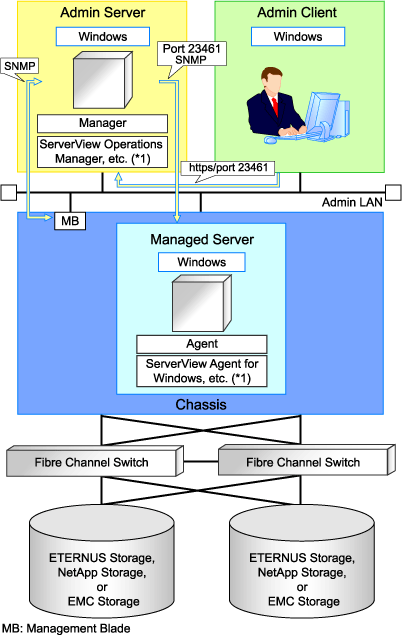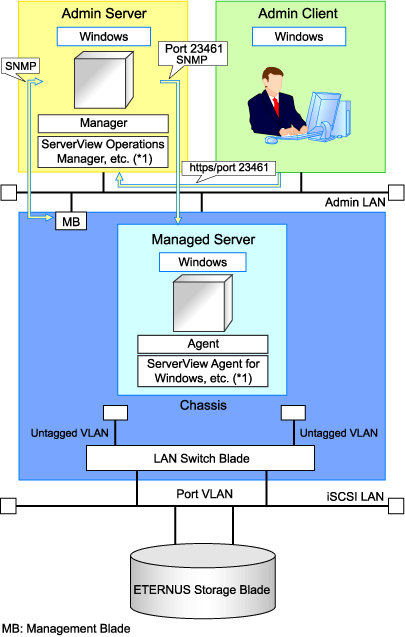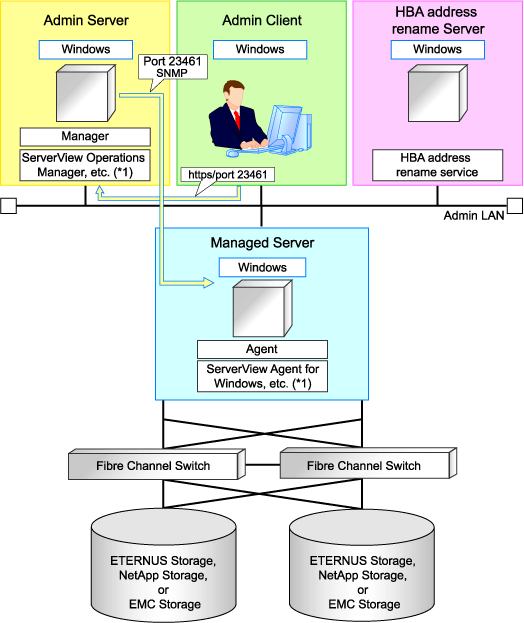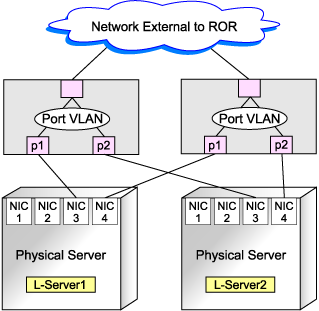This section explains system configuration when creating a physical L-Server.
Prerequisites
To create a physical L-Server, Virtual I/O using VIOM or HBA address rename is required.
For details on VIOM, refer to the ServerView Virtual-IO Manager manual.
For details about the HBA address rename, refer to "8.2 HBA address rename Settings".
Usage methods of VIOM and HBA address rename differ depending on the hardware of managed servers used to configure a physical L-Server.
Blade Servers
Use VIOM.
Rack Mount Servers
Use HBA address rename.
Note
When using iSCSI boot, VIOM is required in the server environment.
Example of System Configuration using VIOM's Virtual I/O
An example system configuration for L-Server creation using Virtual I/O by VIOM is given below.
Install ServerView Virtual-IO Manager on the admin server.
Figure D.1 Example of System Configuration for L-Server Creation in a SAN Storage Environment using Virtual I/O by VIOM

*1: For details on required software, refer to "1.4.2.2 Required Software".
Figure D.2 Example of System Configuration for L-Server Creation in an ETERNUS-iSCSI Storage Environment using Virtual I/O by VIOM

*1: For details on required software, refer to "1.4.2.2 Required Software".
Figure D.3 Example of System Configuration for L-Server Creation in a NetApp-iSCSI Storage Environment using Virtual I/O by VIOM

*1: For details on required software, refer to "1.4.2.2 Required Software".
Example of System Configuration Using Virtual I/O by HBA address rename
An example of system configuration for L-Server creation using Virtual I/O by HBA address rename is given below.
Prepare a server to configure the HBA address rename setup service.
Figure D.4 Example of System Configuration for L-Server Creation in a SAN Storage Environment Using Virtual I/O by HBA address rename

*1: For details on required software, refer to "1.4.2.2 Required Software".
Network Configuration Example
An example of network configuration when a physical server is used as an L-Server is given below:
Figure D.5 LAN Switch Blade Configuration Example Using Network Resources
